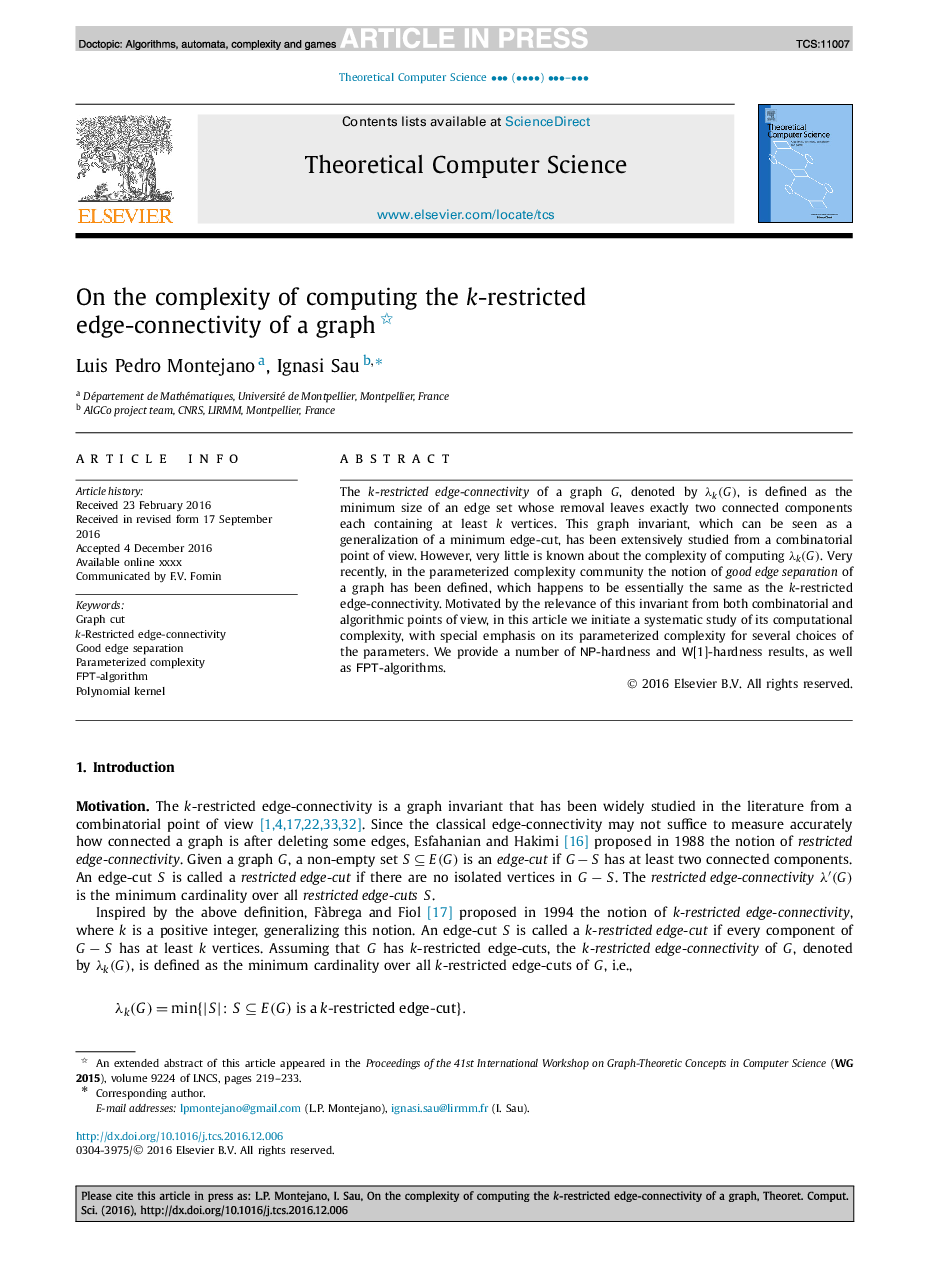| Article ID | Journal | Published Year | Pages | File Type |
|---|---|---|---|---|
| 4952197 | Theoretical Computer Science | 2017 | 9 Pages |
Abstract
The k-restricted edge-connectivity of a graph G, denoted by λk(G), is defined as the minimum size of an edge set whose removal leaves exactly two connected components each containing at least k vertices. This graph invariant, which can be seen as a generalization of a minimum edge-cut, has been extensively studied from a combinatorial point of view. However, very little is known about the complexity of computing λk(G). Very recently, in the parameterized complexity community the notion of good edge separation of a graph has been defined, which happens to be essentially the same as the k-restricted edge-connectivity. Motivated by the relevance of this invariant from both combinatorial and algorithmic points of view, in this article we initiate a systematic study of its computational complexity, with special emphasis on its parameterized complexity for several choices of the parameters. We provide a number of NP-hardness and W[1]-hardness results, as well as FPT-algorithms.
Related Topics
Physical Sciences and Engineering
Computer Science
Computational Theory and Mathematics
Authors
Luis Pedro Montejano, Ignasi Sau,
